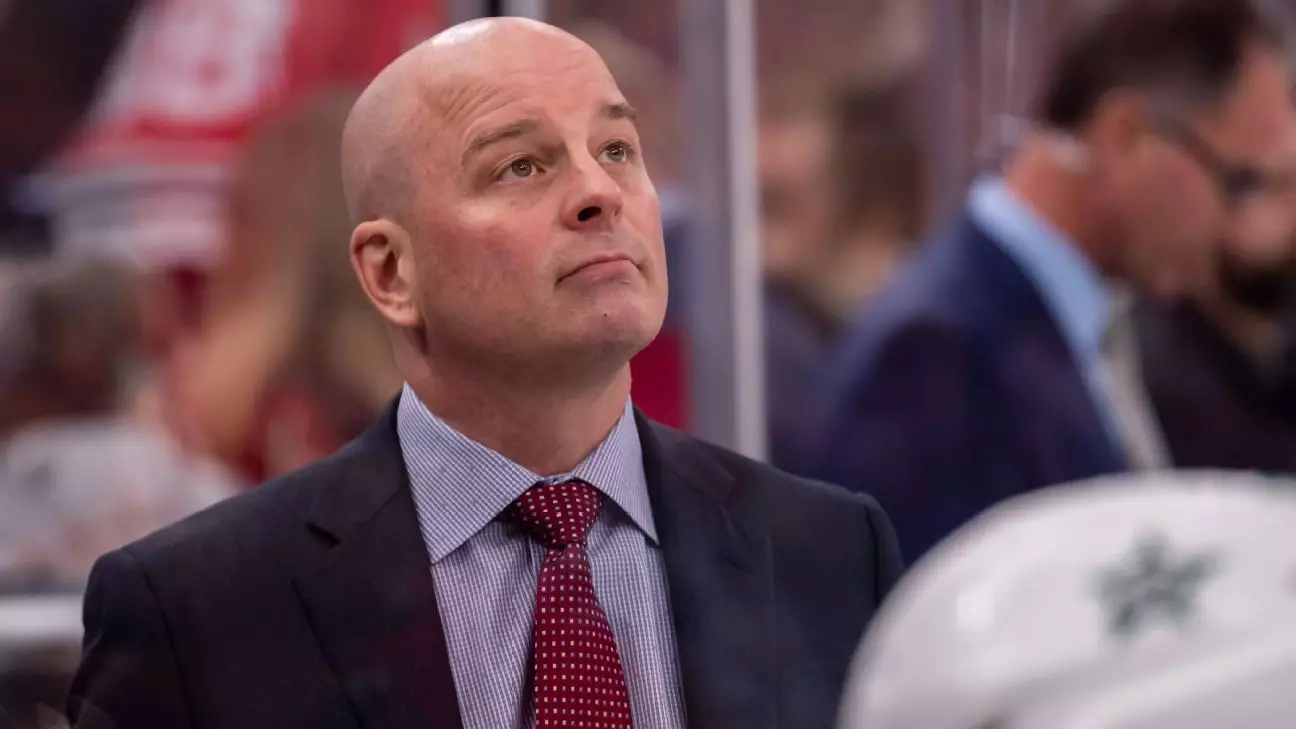In a moment brimming with anticipation and nostalgia, Jim Montgomery returned to St. Louis, a city that holds a special place in his heart. Decked in a vibrant blue sweatshirt, emblazoned with the iconic blue note logo of the St. Louis Blues, he addressed the media filled with emotions that echoed his deep connection to the team. There is a palpable buzz surrounding Montgomery’s appointment as the new head coach of the Blues—a position he has stepped into following a notable yet turbulent term with the Boston Bruins.
Montgomery’s enthusiasm was evident when he described his return as „crazy,“ a sentiment stemming from a rapid series of career changes. Less than a week after parting ways with the Bruins, where he had attained remarkable success, he relished the opportunity to reconnect with many players he had previously coached. The cohesiveness he feels with this group, he argues, bolsters both his confidence and the team’s potential moving forward.
However, the road ahead is dotted with obstacles. Montgomery inherits a team that struggled significantly last season, culminating in a disappointing absence from the playoffs. At that time, Drew Bannister took over coaching duties yet could not revive the team’s performance. The Blues‘ early season statistics reflect a need for serious improvement; their dismal scoring rate of 2.36 goals per game places them near the bottom of the league rankings. Additionally, their effectiveness on special teams—both power play and penalty kill—leaves much to be desired.
With Montgomery’s impressive record of success—most notably a historic 65-win, 135-point season with the Bruins last year—it is evident that he brings with him a wealth of experience and a winning mentality. General Manager Doug Armstrong, recognizing Montgomery’s talent, has laid out an extensive plan for the team’s rejuvenation that includes a significant five-year commitment to a coach who has proved capable of instilling change.
At the heart of Montgomery’s coaching philosophy lies the emphasis on relationships and trust. He believes that solid connections within the team are paramount to fostering an environment that encourages growth and competitiveness. His approach suggests that the road to success is not solely dictated by strategies and plays, but rather through understanding each player’s unique attributes and motivations. Montgomery stated, „When one door closes, another one opens,“ outlining his optimism for what lies ahead in St. Louis.
This philosophy resonates alongside Armstrong’s perspective that Montgomery is not just a temporary fix, but rather a long-term solution for the Blues‘ aspirations. Historically, teams Montgomery has coached for a full season have qualified for the playoffs, showcasing his knack for cultivating winning seasons. Armstrong’s faith in Montgomery was not merely a matter of pragmatic hiring; it exemplified a commitment to building a brighter future for the franchise.
Montgomery’s competitive spirit shines through in his belief that the current Blues roster possesses the potential for playoff contention. „Half the teams miss it,“ he candidly acknowledges, thereby emphasizing the reality of NHL competition. Yet, he remains steadfast in his assertion that the Blues are capable of returning to their former glory—a sentiment that promises both excitement and pressure as the season progresses.
As Montgomery embarks on this new chapter, his poise and determination could usher in a renaissance for the Blues. While the challenges are significant, the union of Montgomery’s strategic insights and the players’ commitment may very well lead to a vital turnaround for the franchise. In a league defined by rapid changes and fierce competition, Montgomery’s return to St. Louis could mark the beginning of a new era—one that seeks to reclaim the franchise’s position as a formidable force in the NHL. The fans, the players, and the organization itself await what Montgomery can conjure as he embarks on this pivotal journey.


Napsat komentář